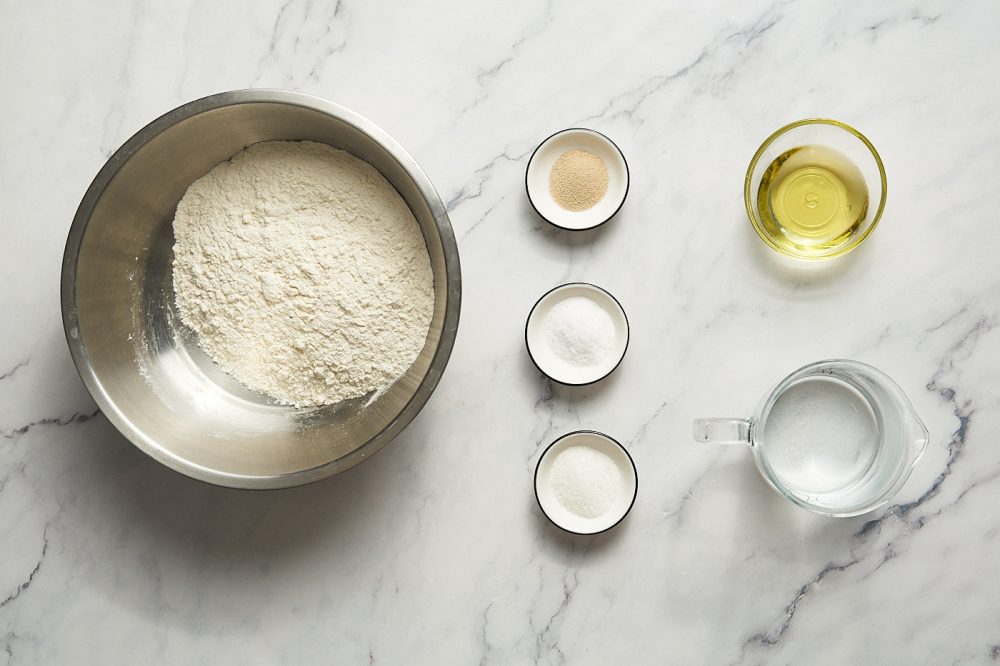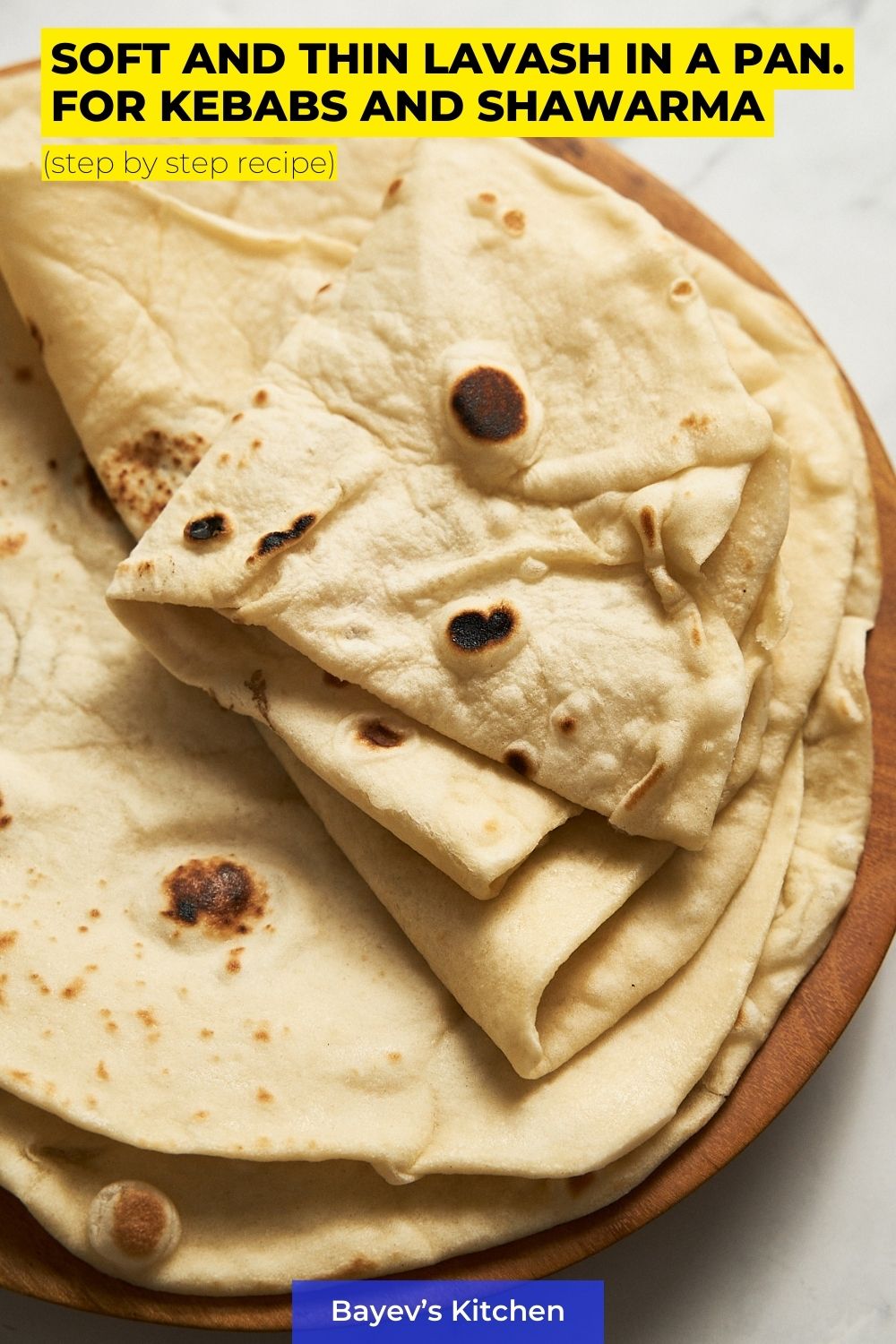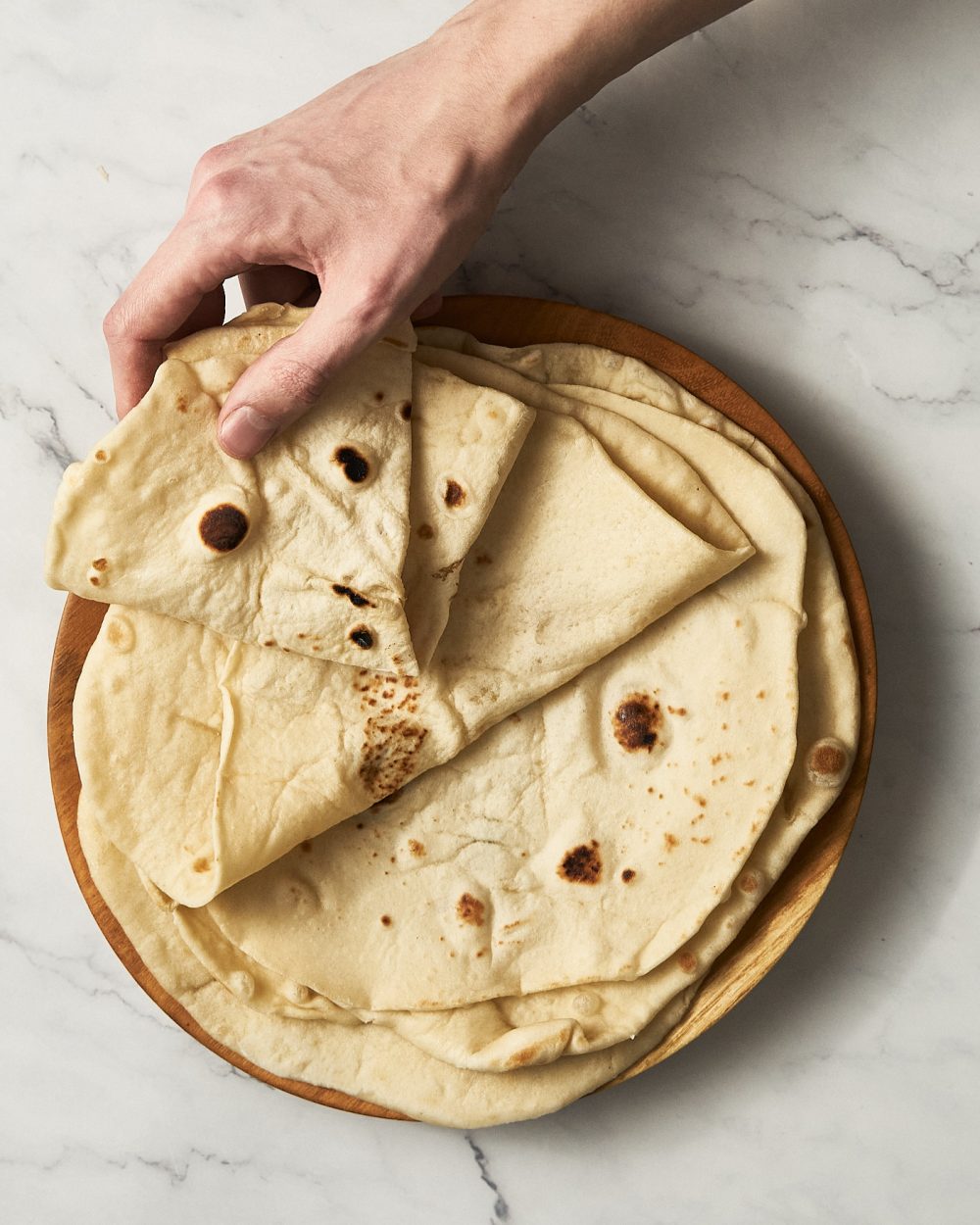I already have a couple of recipes for pan-cooked bread on my blog. These are thin pita breads made with yeast-free dough and Turkish bazlama — also a bread with an air pocket, but more puffy. And today it’s the turn of the lavash.
Lavash is a traditional thin and soft flatbread that is a staple of Middle Eastern cuisine. It is made from a mixture of flour, water, salt, and yeast, and can be used for a variety of purposes, from wrapping juicy shawarma, falafel, or kebabs to scooping up sauces, baking cheese in it, and so on.
Today, you can buy lavash at any major supermarket, but that lavash will never compare to home-cooked lavash.
⏱ Cooking time — 45 minutes overall. Includes 25 minutes of preparation and cooking + 20 minutes unattended.
🥣 Ingredients
🍽 For 8 lavashs:
- 300 g (11 oz) all-purpose flour
- 150 ml (0,6 cup) water
- 1 tsp. sugar
- 4 g (1 tsp.) dry yeast (I use Saf Instant)
- 1 tsp. salt
- 3 tbsp. olive oil

🔪Step by step Directions
Preparing the dough
Measure out 300 g (11 oz) of flour in a bowl. Add 1 tsp. salt, 1 tsp. sugar and 4 g (1 tsp.) of dry yeast. Then mix.
Make a well in the middle and pour half of the water (75 g / 2,6 oz). Start kneading the dough, sweeping the flour from the edges into the water in the center. When there will be no liquid in the bowl, add the remaining water (75 g / 2,6 oz) and 3 tbsp. of olive oil.
Knead the dough with a spatula until no dry parts of the flour remain.
Dough kneading
Sprinkle the work surface with flour. Place the dough on the work surface. Sprinkle your hands and dough with flour.
Knead the dough until homogeneous and elastic, about 5-7 minutes.
Roll the dough into a ball, put it back in a bowl, cover with clingfilm or a damp towel and place in a warm place for 15-20 minutes.
Divide the dough
Transfer the dough to a work surface and divide into 6-8 pieces.
Roll each piece into a ball and transfer to a baking tray. Cover the dough with clingfilm or a damp towel to prevent it from becoming weathered.
Rolling out the dough
Take one ball of dough and roll it out into a round cake about 3 mm thick. Sprinkle with flour, turn the dough over and sprinkle the other side with flour. Set aside, covered with clingfilm or a damp
Place it aside, covered with clingfilm or a damp towel.
Roll out the remaining balls of dough in the same way.
You can stack the pastry on top of each other, but make sure you dust the pastry well with flour so it doesn’t stick together.
Cooking Lavash
Take a large frying pan.
As for pan material – ideally use heavy cast iron pans – they hold heat well, which gives more even heating. I use a non-stick skillet, it’s thin – it gets hotter and faster in the center than the sides. But you can adjust. In my experience, using stainless steel pans is the worst idea.
Heat the frying pan well over medium heat. It is best to let it heat for about 3 to 5 minutes. So that the heat is as even as possible. But time is an individual thing. The pan should be hot, but it shouldn’t be smoking; if it is, it means that it has overheated, and you need to cool it down a little.
Gently place the rolled out dough in the pan. You can stretch the dough a little with your hands if it seems small.
Fry for about 20-30 seconds, then flip and fry another 20-30 seconds on the other side. Flip again, fry for another 5-10 seconds.
Remove the pita from the pan, place it in a large saucepan and cover with a lid.
To keep the lavash soft, leave it in the pan, under a closed lid, for another 10 minutes after cooking. Eat immediately or wrap well in clingfilm and store for up to 3 days or freeze.
Problems and solutions
- If the pita doesn’t brown in 20 seconds (like the first pita in my video above), that means the pan isn’t heated up enough. Increase the heat or give the pan a little more time to warm up.
- The lavash only browned in the center (the second flatbread in the video above) – the center of the pan is hotter than the sides. This is a problem with nonstick and other pans with thin bottoms. For perfect results, use a cast iron skillet.

Soft and thin lavash in a pan. For kebabs and shawarma

Ingredients
- 300 g all-purpose flour
- 150 ml water
- 1 tsp. sugar
- 4 g dry yeast (I use Saf Instant)
- 1 tsp. salt
- 3 tbsp. olive oil
Instructions
- Combine the flour with salt, sugar and dry yeast and mix.Pour half of the water into the mixture and knead the dough. Pour in the remaining water and olive oil. Stir until smooth.
- Sprinkle flour on a work surface, place the dough and knead for 5-7 minutes. Gather the dough into a ball, transfer to a bowl, cover with clingfilm or a damp towel and place in a warm place for 15-20 minutes.
- Divide the dough into 6-8 pieces, roll each into a ball and set aside, covered with cling film or a damp towel.
- Roll the balls of dough into a round cake about 3 mm thick. Stack on top of each other, sprinkle with flour on both sides and tuck under a towel/film.
- Fry the flatbreads in a well heated, dry frying pan for about 20-30 seconds on each side. Heat the pan over medium heat.
- Stack the finished pita bread in a pan and cover with a lid.
